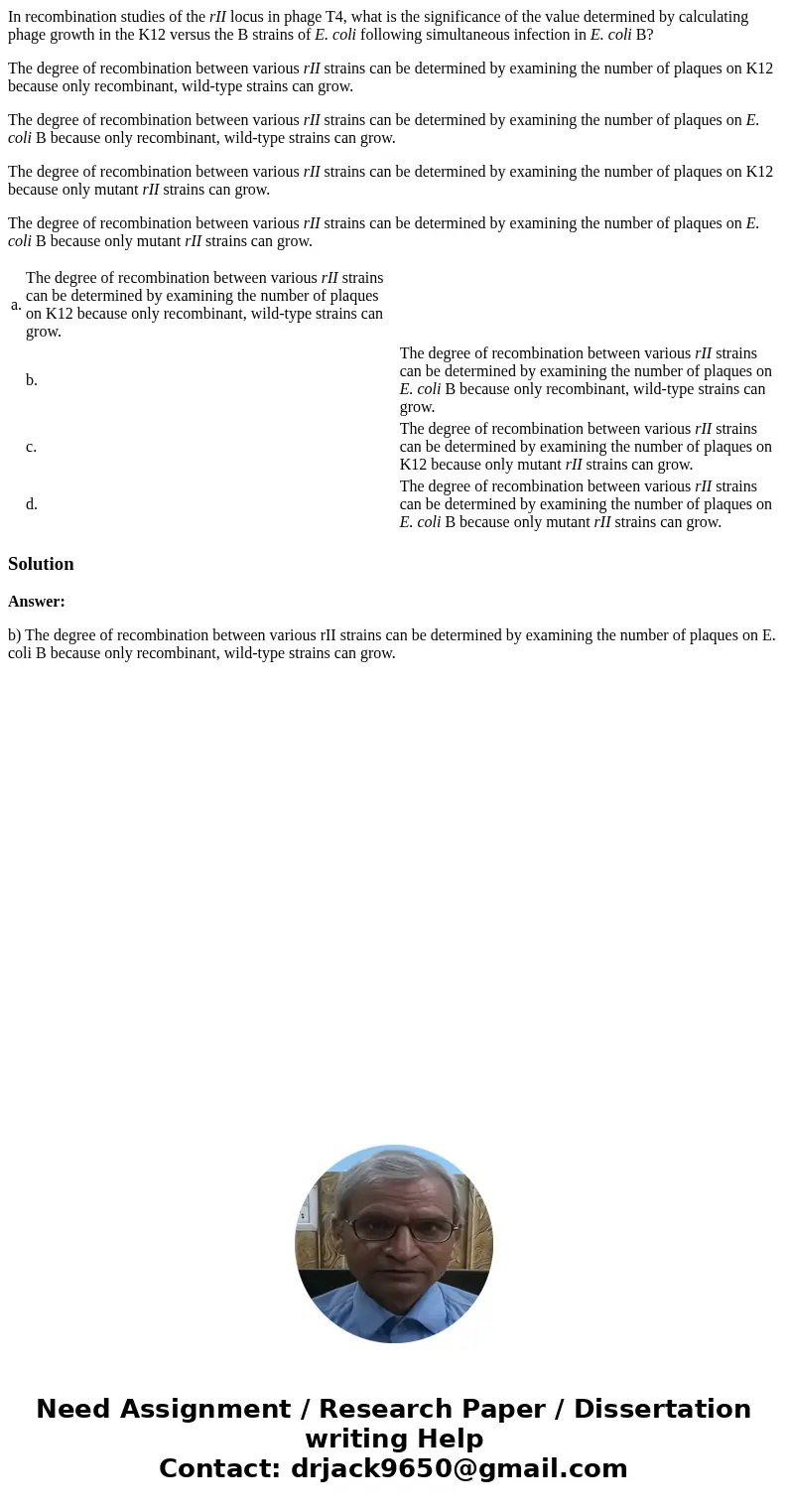In recombination studies of the rII locus in phage T4 what i
In recombination studies of the rII locus in phage T4, what is the significance of the value determined by calculating phage growth in the K12 versus the B strains of E. coli following simultaneous infection in E. coli B?
The degree of recombination between various rII strains can be determined by examining the number of plaques on K12 because only recombinant, wild-type strains can grow.
The degree of recombination between various rII strains can be determined by examining the number of plaques on E. coli B because only recombinant, wild-type strains can grow.
The degree of recombination between various rII strains can be determined by examining the number of plaques on K12 because only mutant rII strains can grow.
The degree of recombination between various rII strains can be determined by examining the number of plaques on E. coli B because only mutant rII strains can grow.
| a. | The degree of recombination between various rII strains can be determined by examining the number of plaques on K12 because only recombinant, wild-type strains can grow. | |
| b. | The degree of recombination between various rII strains can be determined by examining the number of plaques on E. coli B because only recombinant, wild-type strains can grow. | |
| c. | The degree of recombination between various rII strains can be determined by examining the number of plaques on K12 because only mutant rII strains can grow. | |
| d. | The degree of recombination between various rII strains can be determined by examining the number of plaques on E. coli B because only mutant rII strains can grow. |
Solution
Answer:
b) The degree of recombination between various rII strains can be determined by examining the number of plaques on E. coli B because only recombinant, wild-type strains can grow.

 Homework Sourse
Homework Sourse